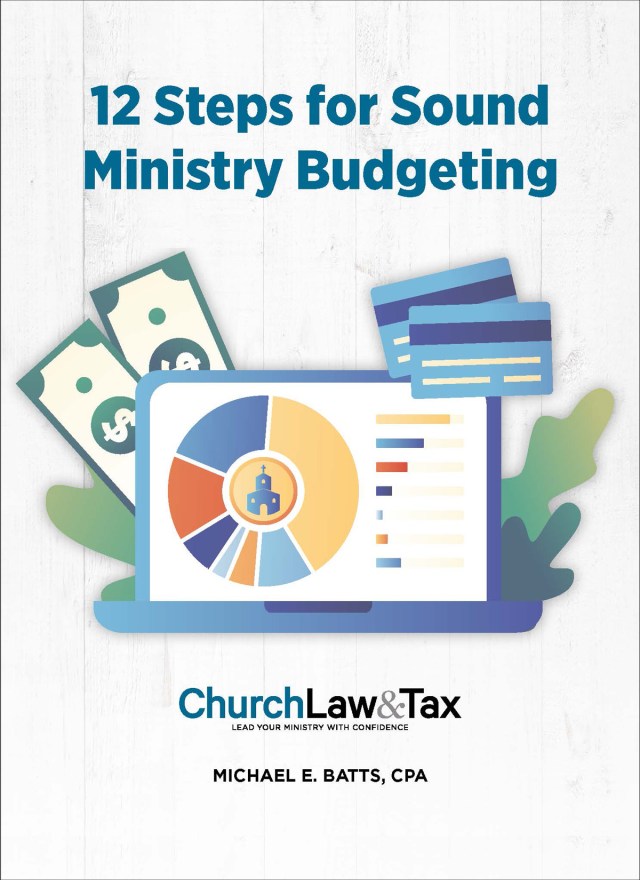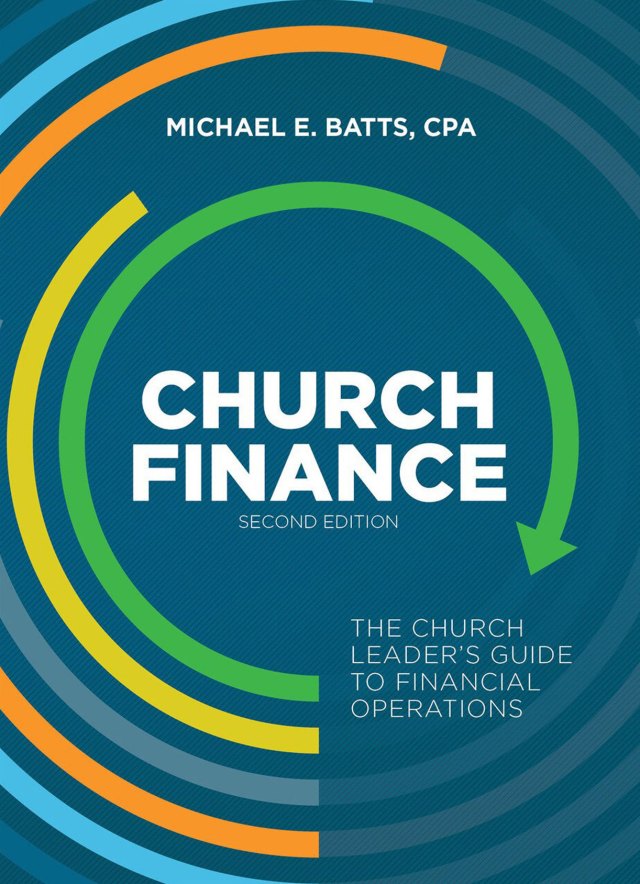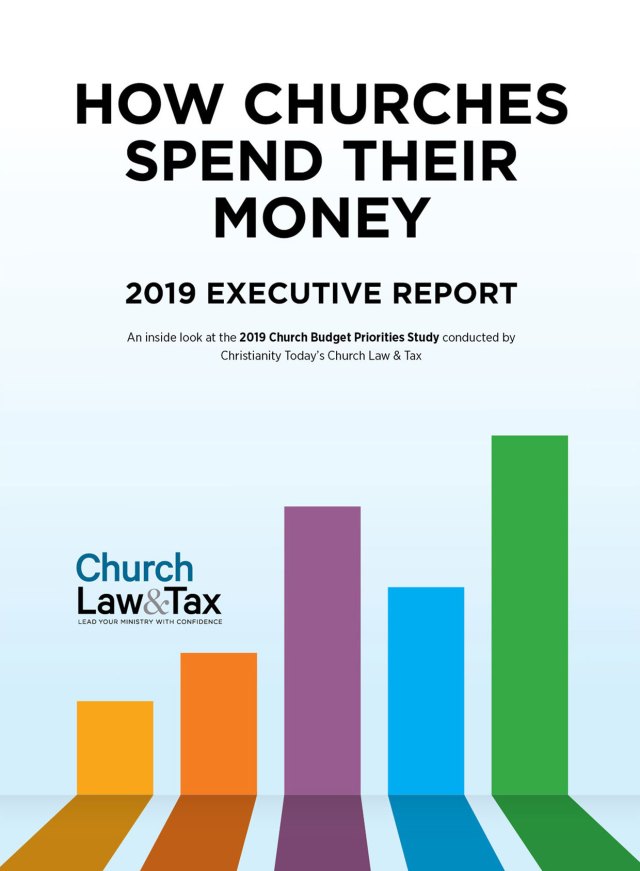Adapted from Church Finance: The Church Leader’s Guide to Financial Operations by Michael E. Batts, available at ChurchLawAndTaxStore.com.
An interesting phenomenon developed during the Great Recession of 2008. Faced with sudden revenue decreases of 30 percent or more, some churches were forced to quickly make dramatic expense reductions. These churches reduced or eliminated multiple programs, ministries, and staff positions to avoid catastrophic cash flow deficits.
In some cases, when the churches informed their congregations of the massive expense reductions, members remarked that the expense cuts had “no noticeable impact.” Such perceptions on the part of congregations raised some interesting questions such as:
- How was a church able to reduce its operating expenses by 30 percent with no noticeable effects on the key elements of the church’s activities?
- Was the church previously wasting that money?
- Why can’t the church ordinarily operate with a lower level of expenses?
Church leaders should contemplate the answers to such questions as part of their overall evaluation of the effectiveness of the church’s spending. They should also evaluate whether a particular program, activity, or initiative contributes to the church’s mission and purpose before committing funds to it.
Mission and purpose
Clearly identify your church’s specific mission and purpose. Next, critically evaluate each program, activity, and initiative through the filter of your mission and purpose. Doing so can ferret out waste or marginally beneficial expenses. Coupled with a zero-based budgeting approach (see chapter 1 in Church Finance), such an exercise can help identify areas that are prime candidates for expense reductions. It can also assist church leaders in reallocating expense priorities toward activities that more effectively accomplish the church’s mission and purpose.
Obvious places to look
Churches looking to reduce expenses will typically look first at these rather obvious areas for cost savings:
- Reducing or eliminating specific programs, activities, and initiatives
- Reducing staff work hours and compensation
- Reducing employer-paid staff benefits
- Renegotiating costs with vendors
- Renegotiating debt terms
- Deferring maintenance on property and equipment
- Eliminating staff positions
Think carefully before eliminating staff
Church leaders who consider terminating employees for expense reduction purposes should remember churches are exempt from both the federal and state unemployment compensation tax and benefit systems. Accordingly, terminated employees will not be eligible for unemployment benefits. Church leaders may wish to consider offering a severance package to terminated employees. Of course, the cost of any severance benefits must be considered when evaluating savings associated with terminations.
Four not-so-obvious places to look
Here are four less-obvious ways churches may be able to reduce expenses:
1. Streamline processes and systems
A Wall Street Journal article stated that a business check costs between $4 and $20 to fully prepare and process, and that the cost of writing a check can be as much as 5 times the cost of an e-payment. Or, consider a staff member who must leave her desk and go to a centralized scanner (as opposed to using a scanner at her desk) every time a document requires scanning may spend 3 to 5 extra minutes on that process. Multiply that 3 to 5 extra minutes by 10 times a day and the result is an extra 30 to 50 minutes per staff member per day. Churches typically have many processes and systems that have not been seriously evaluated for efficiency. A church that wishes to reduce expenses should consider streamlining its processes and systems.
Addressing the following questions (and others like them) can help a church streamline its processes and systems and, as a result, operate more efficiently and at a lower cost.
- How much does it cost for your church to pay a bill with a check? (Not the bill itself, but the process of paying the bill.)
- Does your staff use computerized bank account reconciliation applications? How much time does the account reconciliation process take?
- Are expense reports submitted on paper with receipts attached? How much collective staff time (all staff) is spent preparing and addressing paper expense reports for reimbursement?
- How much collective staff time does your church spend completing, approving, and otherwise addressing purchase orders and similar authorizations?
- Have you actively encouraged your congregation to give electronically? Is giving to your church as easy as buying a book on Amazon.com? How much time does your staff spend processing check-based offerings?
- How much time does your staff spend filing documents and retrieving (or searching for) documents in paper files?
- Do you still have a person answering your telephones?
2. Energy studies and adaptations
Many churches have hired experts to perform energy usage analyses. Experts will typically recommend adaptations to equipment, fixtures, insulation, lighting, software, and usage management systems—all with the goal of operating with greater energy efficiency. The changes necessary to generate significant energy savings may require a substantial initial investment. Of course, a church must evaluate its expected return on that investment. A church interested in pursuing an energy study should reach out to other churches for referrals to a reputable service provider. The church may also wish to consult its own electrical utility company to identify energy analysis options.
3. Outsourcing
Many churches outsource certain aspects of their operations. Why do they choose to do so? In many cases, outsourcing places work in the hands of experts who can perform a given function or activity more effectively, more efficiently, and less costly.
For example, churches commonly outsource the administration of their employee retirement plans, cafeteria (Section 125) plans, and other employee benefit plans. Many churches with investment portfolios outsource the asset management function for those portfolios. Churches commonly outsource the processing and disbursement of their payrolls. Other services commonly outsourced include grounds maintenance, information technology (IT) services, vehicle maintenance, and security. Churches also may outsource:
- Regular accounting and financial reporting activities
- Bill-paying activities
- Human resources (or some aspects of it, such as employee screening; the service provider must be fully aware of the unique legal attributes that apply to churches in the HR arena)
- Document printing, preparation, and graphic design
- Document editing and proofing
- Website and social media management
- Public relations
4. Collaboration
To more effectively and efficiently carry out their mission and purpose, churches sometimes collaborate with each other or with other Christian ministries. While collaboration with international missions and humanitarian relief activities is common, collaboration with domestic ministry activities is also an area of growing interest. Collaboration can take forms similar to outsourcing and can offer many of the same advantages. The primary differences between collaboration and outsourcing are that:
- In collaboration arrangements, the church often participates directly alongside another church or ministry.
- Outsourcing is most commonly a contractual arrangement with a vendor or service provider, whereas some aspects of collaboration may not involve formal contractual agreements.
Here is an example of collaboration:
Elm Church desires to meet the needs of homeless people in its area. Rather than start its own ministry to the homeless, Elm Church collaborates with a Christian homeless ministry in the same community. One of Elm Church’s staff members works with the staff of the local Christian homeless ministry as part of his duties for Elm Church. Elm Church also provides volunteers to serve at the homeless ministry center, and Elm Church makes grants to the homeless ministry to help fund its operations.*
A church that considers collaborating with other churches or ministries should make sure that the expectations of all parties involved are clearly spelled out. Depending on the nature and extent of the collaboration, a legal agreement may be appropriate and necessary. Collaboration agreements can take various forms. However, it is wise for a church considering such an arrangement to consult with its legal counsel in order to ensure that a proposed collaboration arrangement and its related agreements are appropriate for the church and do not subject the church to unintended risks or other unanticipated consequences.
Consider the possibilities
As a normal part of the budgeting process, churches find themselves wishing to conduct more programs, activities, and initiatives than available funds will allow. By reducing certain expenses, they may be able to fund viable ministries that fulfill their mission. Additionally, churches that wish to improve their liquidity and financial position may need to reduce expenses in an effort to generate reasonable and appropriate cash flow surpluses to reach their targets.
*For other examples, see the ‘Collaboration’ section in chapter 1 of Church Finance: The Church Leader’s Guide to Financial Operations.





